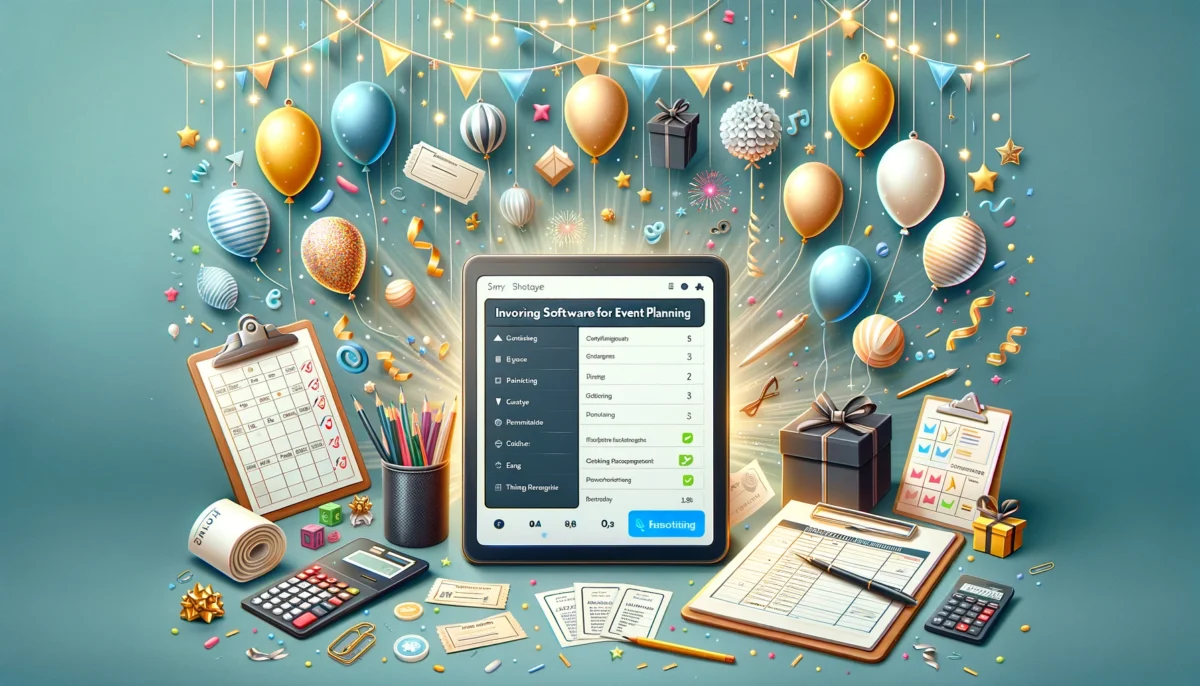As a small business owner, keeping track of your company’s financial health is crucial to achieving success and maintaining growth. Knowing and understanding the essential financial metrics can help you make better-informed decisions, optimize your cash flow, and identify areas for improvement. In this blog, we will delve into the most important financial metrics every businesses should track to ensure their business stays on the path to success.
By keeping track of these key financial signs, you can make more informed decisions, better manage your company’s resources, and spot problems before they become a major problem.Whether you are a seasoned entrepreneur or just starting, having a clear understanding of these financial parameters will empower you to navigate the complexities of running a business with confidence.
In the following sections, we will explore ten essential financial metrics, discuss their importance, and provide guidance on how to track and analyze them. By the end of this blog, you will have the knowledge and tools necessary to evaluate your business’s financial performance and make informed decisions to drive growth and profitability.
Cash Flow – The Cornerstone of Your Business
Cash flow is often viewed as the foundation of any business, as it represents the movement of funds in and out of your company over a specific period. Tracking and managing this financial aspect is crucial, as it offers insights into your business’s liquidity, solvency, and overall financial health. Understanding your cash situation allows you to make informed decisions about your business’s operations and ensure that you have enough resources to cover expenses, invest in growth, and pay off debts.
Two primary types of cash movement require monitoring:
Operating Cash Flow: This refers to the money generated from your business’s core operations, such as sales, minus the cost of goods sold (COGS) and operating expenses. Positive operating cash movement indicates that your business is generating enough revenue from its primary activities to cover its expenses.
Free Cash Flow: This is the remaining funds after accounting for capital expenditures (such as investments in equipment or property) and working capital needs. Free cash movement is a vital measure of your business’s financial flexibility and its ability to invest in growth or repay debts.
To effectively track and manage cash, one should create a cash flow statement, which provides a detailed overview of the inflows and outflows of funds within a specific period. Regularly updating and analyzing your statement will help you identify patterns, spot potential issues, and make necessary adjustments to maintain a healthy financial position.
Remember, managing cash is not only about increasing revenue but also about optimizing expenses and working capital. Keep a close eye on your cash to ensure your business remains solvent and financially stable
Profit Margin – Measure the Efficiency of Your Business
Profit margin is an essential financial metric that allows entrepreneurs to gauge the efficiency and profitability of their operations. It represents the percentage of revenue left as profit after accounting for all costs and expenses. Monitoring this metric enables you to evaluate your pricing strategy, control costs, and assess your business’s overall financial position.
There are two key types of margins you should track:
Gross Profit Margin: This figure is calculated by subtracting the cost of goods sold (COGS) from total revenue and dividing the result by total revenue. It demonstrates the proportion of revenue remaining after covering direct costs, such as materials and labor. A high gross profit margin suggests your business is effectively managing its direct costs, allowing room for addressing indirect expenses and generating a net profit.
Net Profit Margin: This margin takes into account all costs and expenses, including indirect ones like operating expenses, taxes, and interest. To calculate the net margin, subtract all expenses from total revenue and divide the outcome by total revenue. A high net margin indicates that your company is efficiently handling both direct and indirect costs, resulting in a healthy bottom line.
Consistently tracking and analyzing your margins will help you pinpoint areas for improvement, such as adjusting pricing, cutting costs, or optimizing operations. By concentrating on enhancing these margins, you can bolster your financial stability, reinvest in growth, and ultimately achieve your business goals.
Bear in mind that maintaining robust margins is crucial for your business’s long-term success. Closely monitor these vital financial parameters to ensure your company stays competitive and profitable.
Accounts Receivable Aging – Monitor Outstanding Invoices and Improve Cash Flow with Invoice Crowd
Accounts receivable aging is a financial metric that aids in tracking the status of unpaid bills, thus managing cash more effectively. This metric provides insight into the funds owed to your business by clients and the length of time they remain outstanding. By understanding the age of your receivables, you can take proactive measures to ensure timely payments and minimize the risk of bad debt.
To create an aging report for your receivables, organize your outstanding bills into different time periods, such as 0–30 days, 31–60 days, 61–90 days, and beyond 90 days. Analyze the report to identify trends and potential issues, like customers who consistently pay late or significantly overdue bills.
Utilizing a platform like Invoice Crowd can help you efficiently manage your accounts receivable by automating the process of generating aging reports and providing tools for tracking and following up on outstanding bills.
Here are some actions you can take to enhance the management of your outstanding bills:
Establish clear payment terms: Make sure your payment terms are clearly communicated to clients, both in your contracts and on your billing documents. This sets expectations and reduces misunderstandings that could lead to delayed payments.
Offer early payment incentives: Motivate clients to pay their bills early by offering discounts or other incentives for prompt payment.
Follow up on overdue bills: Develop a systematic process for following up on overdue bills, including sending reminders, making phone calls, and, if necessary, pursuing legal action.
Assess customer creditworthiness: Before extending credit to newly acquired customers, evaluate their credit history and financial stability to minimize the risk of non-payment.
By closely monitoring your accounts receivable aging with the help of Invoice Crowd and taking proactive steps to improve collections, you can maintain a steady cash flow, reduce financial risks, and preserve the financial stability of your business.
Accounts Payable – Manage Your Expenses and Maintain Good Supplier Relationships
Accounts payable is a vital financial aspect, representing the money your business owes to vendors for products or services provided on credit. Effective management of this metric is crucial for maintaining strong vendor relationships, avoiding penalties or late fees, and ensuring your business runs smoothly.
Here are some tips for effectively handling your payables:
Set up an organized system: Develop a system for tracking and managing your current liability account, including organizing bills by due date and setting up alerts for upcoming payments. This will help you stay on top of your expenses and avoid missed or late payments.
Negotiate favorable payment terms: Work with your vendors to negotiate payment terms that benefit both parties. Extending payment terms can provide your business with more time to generate funds before the payment is due, while prompt payment may result in discounts or other incentives.
Prioritize payments: Allocate your available cash to prioritize payments based on factors such as the importance of the vendor to your business, the potential consequences of late payment, and any early payment discounts available.
Leverage technology: Utilize software solutions and tools to automate your accounts payable processes, such as invoice management, payment scheduling, and reconciliation. This will help reduce manual errors and save time, allowing you to focus on other aspects of your business.
By actively monitoring your accounts payable, you can determine how much cash you’re going to need and when you’re going to need it.
Customer Acquisition Cost – Measure the Cost of Attracting New Customers
Customer Acquisition Cost (CAC) is a critical financial metric for businesses to track, as it helps determine the cost of newly acquired customers. This metric is calculated by dividing the total marketing and sales expenses by the number of new customers acquired within a given period. Monitoring your CAC allows you to evaluate the effectiveness of your marketing efforts and identify areas where you can improve or optimize your strategies to reduce costs and boost growth.
Here are some ways to optimize your CAC:
- Analyze your marketing channels: Identify which marketing channels are generating the most customers and providing the best return on investment (ROI). By focusing on high-performing channels, you can allocate your marketing budget more effectively and lower your CAC.
- Improve your conversion rates: Optimize your website, landing pages, and marketing materials to increase conversion rates, resulting in more customers at a lower cost per acquisition.
- Implement marketing automation: Utilize marketing automation tools to optimize your marketing processes, reduce manual effort, and enhance efficiency. This can help lower your CAC by minimizing the time and resources needed for customer acquisition.
- Retain existing customers: Focus on retaining existing customers by providing excellent customer service and nurturing relationships. Customer retention often costs less than acquiring new customers, which can help reduce your overall CAC.
By regularly tracking your CAC, you can make informed decisions about your marketing strategies, identify areas for improvement, and work towards lowering costs while increasing customer acquisition and overall business growth.
Customer Lifetime Value – Understand the Long-term Value of Your Customers
Customer Lifetime Value (CLV) is a crucial financial metric that helps to understand the long-term value of their customers. This metric represents the total amount of revenue that a customer is expected to generate for your business over their entire relationship with you. By tracking CLV, you can make informed decisions about customer acquisition and retention strategies, allocate resources effectively, and prioritize high-value customers.
To calculate CLV, you can use the following formula:
CLV = Average Purchase Value x Purchase Frequency x Customer Lifespan
Here are some ways to optimize your CLV:
- Improve customer retention: Retaining existing customers is often more cost-effective than acquiring new ones. Develop strategies to strengthen customer relationships, such as offering loyalty programs, personalized offers, and exceptional customer service.
- Increase customer spending: Encourage customers to spend more by upselling, cross-selling, and offering bundled services or products. This can help boost your average purchase value and overall CLV.
- Enhance customer experience: Deliver an outstanding customer experience by understanding your customers’ needs and preferences, addressing their pain points, and continuously improving your products and services.
- Segment your customers: Identify high-value customers and target them with tailored marketing campaigns, promotions, and offers to maximize their CLV.
By tracking and optimizing your Customer Lifetime Value, you can improve customer satisfaction, boost revenue, and drive long-term growth for your business. Remember to monitor this metric regularly and adjust your strategies as needed to ensure you are maximizing the value of each customer relationship.
Burn Rate – Monitor Your Cash Consumption Rate
Burn rate is a vital financial parameter, as it assesses the speed at which your business spends its cash reserves. This parameter enables you to determine how long your enterprise can operate before exhausting cash or requiring extra funding. Keeping track of which lets you proactively decide on cost reduction strategies, fundraising, and revenue generation to maintain financial stability.
To determine your cash expenditure rate, subtract your monthly cash inflow from your monthly cash outflow. The resulting figure signifies the amount of cash your business consumes each month. Next, calculate your “runway,” which indicates the number of months your business can continue functioning at the current expenditure rate before depleting its cash reserves:
Runway = Current Cash Reserves / Monthly Burn Rate
Here are some tactics to effectively manage your cash expenditure rate:
Minimize expenses: Pinpoint areas where you can decrease costs without compromising the quality of your services or products. This might involve renegotiating contracts, optimizing operations, or sourcing more cost-efficient vendors.
Boost revenue: Seek opportunities to increase revenue, such as introducing new services or products, broadening your market, or implementing price hikes.
Secure additional funding: If your expenditure rate is too high and there’s a risk of running out of cash, consider securing additional funding through investors, loans, or grants to keep your business going.
Key Performance Indicators (KPIs) – Measure Your Business Success
Key Performance Indicators are distinct, measurable metrics that enable you to monitor the progress and performance of your enterprise. Keeping an eye on these signs allows you to evaluate your business’ success, identify areas for improvement, and make informed business decisions. Some typical KPIs include:
- Revenue growth: This KPI measures the percentage increase in your business’s revenue over a specific period, such as month-over-month or year-over-year. Tracking revenue growth helps you assess the effectiveness of your sales and marketing efforts and identify trends in your market.
- Gross profit margin: As discussed earlier in this article, the gross profit margin is a critical KPI that indicates the profitability of your services or products.
- Customer satisfaction: Customer satisfaction is a qualitative KPI that measures how happy your customers are with your products or services. You can track customer satisfaction through surveys, reviews, and feedback.
- Employee productivity: This indicates how effectively your employees are utilizing their time and resources to generate value for your business. Employee productivity can be tracked through various parameters, such as revenue per employee or tasks completed per hour.
- Return on investment (ROI): ROI is a crucial KPI that evaluates the efficiency and profitability of your investments. You can calculate ROI by dividing the net profit of an investment by its cost.
By tracking these KPIs and other relevant metrics, you can gain valuable insights into your business’s performance and make informed decisions to optimize your operations and achieve your goals.
Conclusion: Stay on Top of Your Small Business Finances
In conclusion, tracking essential metrics is crucial for every business to ensure the company’s financial health and long-term success. By closely monitoring metrics such as cash flow, profit margin, customer acquisition cost, burn rate, and Key performance metrics, you’ll have a clear understanding of your current financial status and business performance.
Paying attention to parameters like the churn rate and current liabilities will help you identify potential issues and make timely adjustments to avoid pitfalls. As a business owner, staying on top of your company’s finances and making data-driven decisions is a vital skill that can greatly contribute to the success of your business. Continuously analyze these key financial metrics for small businesses to optimize your operations, maximize your profits, and achieve your financial goals.
Frequently Asked Questions (FAQs)
How can small businesses effectively manage their cash flow to ensure they have enough for day-to-day operations?
Business owners can manage their cash effectively by monitoring income and expenses, creating realistic budgets, and maintaining a cash reserve. This helps ensure they have enough funds for day-to-day operations.
What are the essential metrics that every business should track to measure their business’s performance?
Every business owner needs to track essential finance metrics like cash flow, profit margin, CAC, and customer lifetime value to measure their business’s performance and make informed decisions.
What role does the quick ratio play in assessing the financial stability of a small business?
The quick ratio plays a crucial role in assessing the financial stability of a business by indicating how much of its liquid assets, excluding inventory, can cover its short-term liabilities.
What is the significance of tracking key performance metrics in the success of a business?
Keeping track of key performance metrics plays a crucial role in the success of a business by offering important insights into the efficiency of processes and tactics, which in turn, facilitates informed decision-making.
Why is it important for small businesses to regularly analyze profit and loss statements?
To run a successful business, it is important to analyze their profit and loss statements regularly to understand their net income, identify trends, and make better financial decisions.




